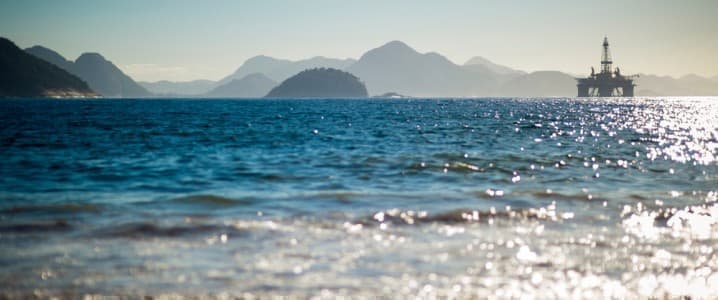Brazil, Guyana, and Argentina Lead Next Wave of Non-OPEC Oil Production
Oil from offshore Brazil, Guyana, Suriname, and Argentina’s Vaca Muerta shale play will be key sources of cost-competitive non-OPEC oil supply through 2030, Rystad Energy has predicted. Rystad has predicted that global liquids demand will peak in the 2030s at around 107 million barrels per day (bpd), maintain a plateau above 100 million bpd through the 2040s before declining to around 75 million bpd by 2050. According to the Norwegian energy consultancy, non-OPEC+ supply will be key to balancing the global market, with cheap oil from South America helping to offset slower U.S. shale growth. Non-OPEC+ producers are expected to account for around 5.9 million bpd, or nearly 60%, of new conventional oil currently under development through 2030 (total new capacity). South America will be the main source of this supply growth at 560,000 bpd of crude and condensate, with North America supplying ~480,000 bpd.
Radhika Bansal, VP of Upstream Research at Rystad Energy, said today’s producing wells are on track to deliver less than half of their current output by 2030, a trend that reinforces the need for sustained investment in both new and mature fields. She noted that undeveloped and discovered assets will continue to play a key role in meeting global supply needs through the mid-2030s. While the market could briefly tip into oversupply, Bansal cautioned that “above-surface risks could trigger delays in project timelines.” She added that South America’s deepwater track record positions it well to provide competitive barrels globally, with continued investment needed as the supply gap is expected to widen after the mid-2030s.
Source: Rystad Energy
Brazil is a leading source of production growth, especially from its prolific offshore ultra-deepwater pre-salt oil fields, which boast low break-even costs. Major investments are being made, with several new Floating Production Storage and Offloading (FPSO) units scheduled to come online in the current year. Brazil’s offshore oil production is a major driver of its economy, with production primarily from pre-salt fields like Lula and Búzios, operated mostly by the state-owned company Petrobras (NYSE:PBR). The country has set new production records and continues to increase its output through the development of new platforms and exploration in deepwater fields, though it faces regulatory and infrastructural challenges. The Lula Field is one of Brazil’s most significant offshore projects with estimated reserves of 8.3 billion barrels of oil equivalent(boe); Búzios Field achieved a record 800,000 barrels of oil per day in February 2025, with more platforms being added to increase capacity.



Leave a Comment
Your email address will not be published. Required fields are marked *